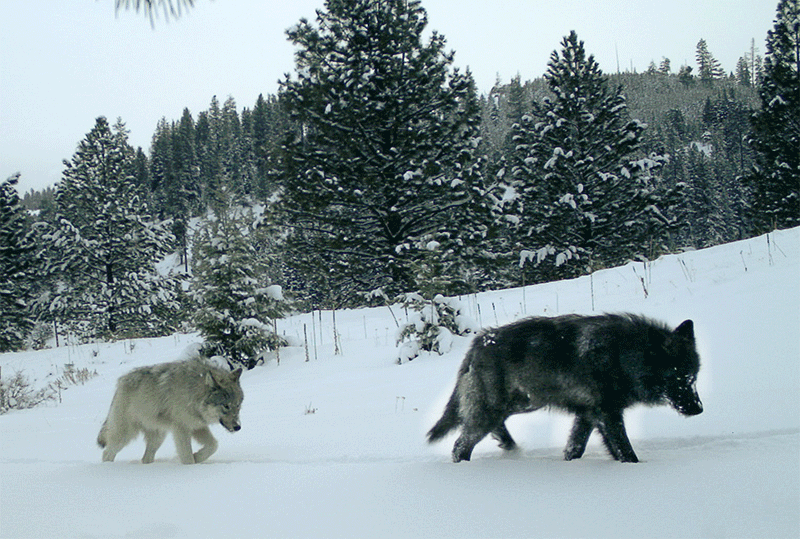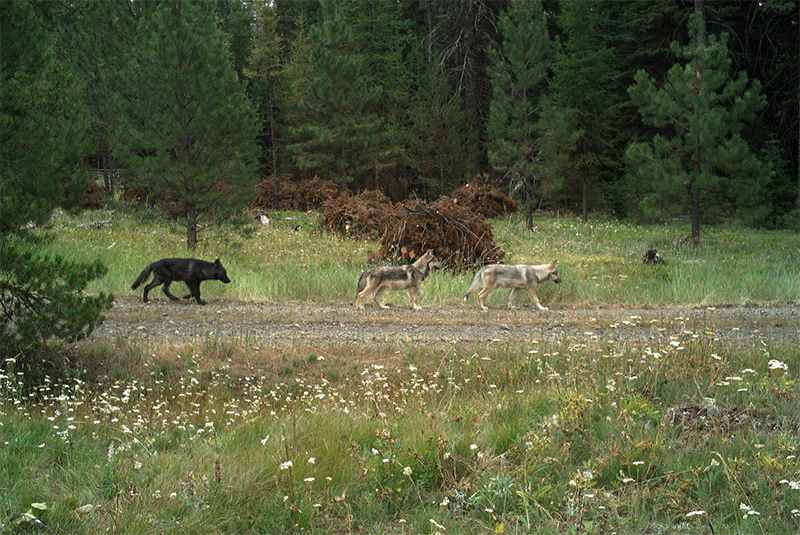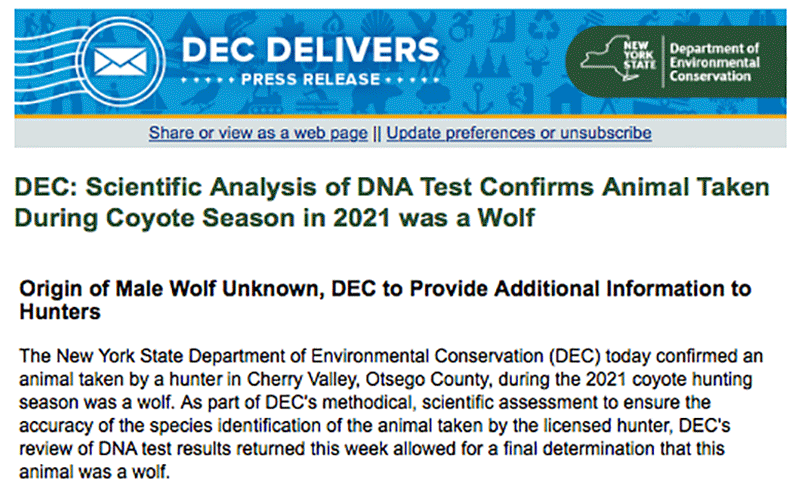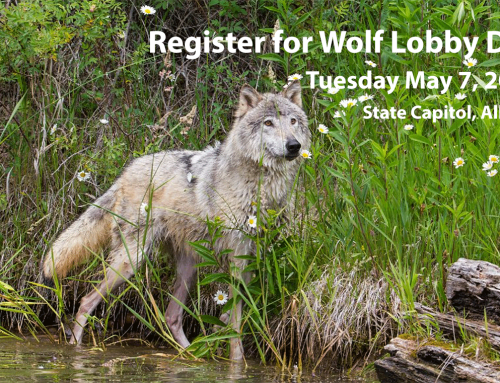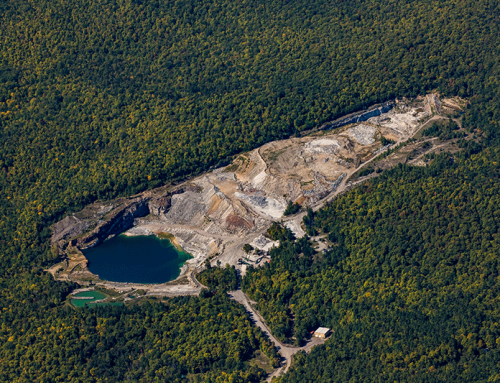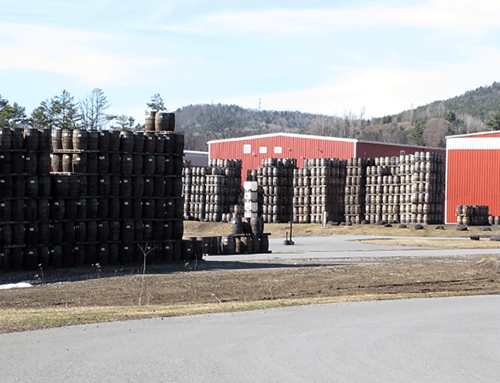There are wolves in New York State. But you would never know that from the way the Department of Environmental Conservation (DEC) is acting.
Wolves are listed as an endangered species under both federal and New York State law and the killing of wolves is prohibited. Despite this legal protection, wild wolves have been and continue to be killed in New York State. DEC is the state agency charged with the responsibility for managing wildlife in the State and for protecting wildlife species listed as endangered. Instead of taking action to prevent more killings of wolves, DEC’s response has first been to deny the reality that wolves are present in the State and then, when forced to admit that wolves are here, sitting back and doing nothing. The most recent case of a wolf killing is a stunning example of DEC’s wolf-denial stance, its concealment of evidence from the public, and its failure to fulfill its legal duty to protect wolves in New York.
DEC Claims That Wolf is a Coyote
In December 2021, a large 85-pound canid was shot by a hunter in Otsego County near Cooperstown. After shooting the animal, the hunter became concerned that what he had initially thought to be a large coyote was actually a wolf. The hunter did the right thing and contacted DEC to report the incident and to have DEC examine the canid.
Despite possessing wolf-like size and physical characteristics—and the hunter’s own belief that he had mistakenly shot a wolf—DEC quickly announced that a DNA analysis showed that the animal was just a large coyote. The Adirondack Explorer reported that DEC claimed it had a DNA analysis that showed the Cooperstown wolf was “closely identified as an Eastern coyote, with a mix of coyote, wolf, and dog genetics.” WTEN News 10 in Albany quoted a DEC spokesperson stating that, “Initial DNA analysis conducted determined the wild canid to be most closely identified as an Eastern coyote.”
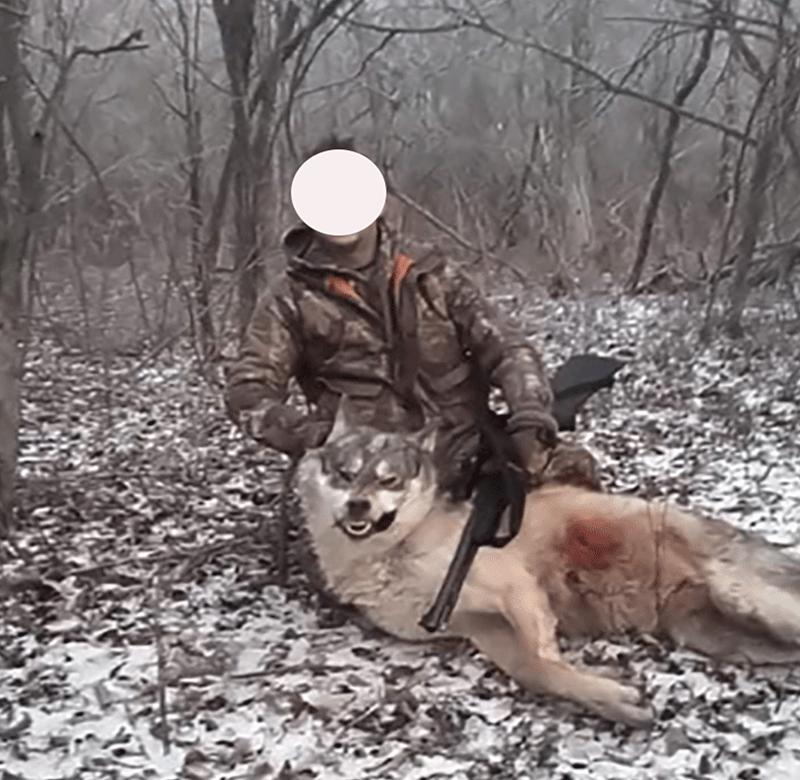
A photo of the Cooperstown wolf that was posted on Facebook shortly after the animal was killed by a hunter who mistook it for a large coyote.
DEC Hides the “Evidence”
Predictably, publication of the photo of the Cooperstown animal and DEC’s claim that it was just a large coyote led to calls for DEC to release its DNA analysis to the public. However, despite repeated requests from environmental groups and the media for release of the DNA analysis, DEC refused to release its DNA study to the public. In the face of DEC’s concealment of the DNA analysis, Protect the Adirondacks and other groups and media outlets were forced to request access to the study under New York’s Freedom of Information Law (FOIL). When the FOIL requests were submitted in July 2022, DEC responded that the DNA results would not be provided until October at the earliest. DEC did not offer any explanation why it needed to wait three months to release DNA results that it had been citing in public statements for weeks.
In the meantime, two independent DNA tests of the Cooperstown canid were commissioned by Protect the Adirondacks and other environmental organizations, including the Northeast Ecological Recovery Society. One test was conducted by the Natural Resources DNA Profiling & Forensic Centre at Trent University in Ontario Canada; the other was done at Princeton University in New Jersey. The results from the two independent DNA tests, released in July 2022, proved that the Cooperstown “coyote” was indeed a wolf, with a genetic makeup of approximately 98% wolf genes.
DEC Finally Releases its “Evidence”
The Princeton University DNA analysis was released on September 20, 2022 and its conclusion that the Cooperstown animal was a wolf was widely reported in the media. The next day, DEC finally released the DNA analysis it had withheld from the public for months. The report, which was dated April 2022, was four pages long. DEC did not explain why it concealed the 4-page report from the public for five months.
Remarkably, when DEC at long last released its own DNA test report, the results showed that the “coyote” had a genetic composition that was 65% wolf and 35% coyote. Thus, DEC’s own DNA analysis contradicted its public statements that the Cooperstown animal was just a large coyote.
Faced with media reports that DNA analyses from two reputable labs proved that the Cooperstown “coyote” was actually a wolf, DEC was finally forced to concede—after months of denial and concealment—that the Cooperstown animal was in fact a wolf. However, drawing from its arsenal of wolf-denial tactics, DEC next claimed that the wolf was likely an escaped captive wolf rather than a wild wolf. More months passed while DEC had the animal’s hair, bone and teeth analyzed in an effort to prove that the Cooperstown wolf was an escaped captive wolf. But when proof of the animal’s dietary history was finally obtained, it was clear that the Cooperstown wolf had been surviving for years on a wild diet. On March 13, 2023, DEC at last conceded that the Cooperstown animal was indeed a wild wolf—fifteen months after the wolf was killed and reported to DEC. See a New York Times story that recounts this journey.
DEC Ignores Wolf Advocates and Refuses to Take Needed Actions to Protect Wolves
Frustrated and concerned by DEC’s foot-dragging in acknowledging the presence of wolves in the State, PROTECT joined with 37 other environmental and wildlife conservation organizations in a letter dated September 15, 2022, calling on DEC Commissioner Basil Seggos “to take immediate action to increase protections for wolves potentially dispersing through and recolonizing the Northeast, including the state of New York.” The letter urged DEC to follow best management practices for protecting fragile wolf populations, including restricting coyote hunting in order to avoid intentional and unintentional take of wolves in the region. The letter also urged DEC to assist conservation groups and outdoor recreationists currently working to restore and protect critical habitat linkages by keeping New York’s wildlands connected to natural habitats in Ontario and New England.
Many of the organizations signing on to the September 2022 letter joined together to form the Northeast Wolf Recovery Alliance (NEWRA). In October 2022, PROTECT and other NEWRA members met with DEC staff to follow up on the September letter and to present additional specific recommendations for actions DEC could take to better safeguard wolves in New York. DEC promised to consider the recommendations.
On November 29, 2022, NEWRA sent a follow-up letter to DEC reiterating and amplifying the additional regulatory and other measures discussed during the October meeting, including requiring that all coyotes taken be checked in and tagged; that coyotes meeting certain criteria (e.g., weight, size, canine spread, head and ear size) be subjected to a DNA analysis to assess the genetic composition of the animal; that a coyote hunting moratorium be imposed in areas where a wolf kill has been documented to protect other wolves that may be present in the area; and that some limitations on coyote hunting, such as shortening the season, prohibiting night hunting of coyotes and establishing bag limits, be adopted. The November letter also requested that DEC provide additional educational outreach to hunters and trappers about the presence of wolves in the State and how to distinguish wolves from coyotes in the field.
Three months went by without any response from DEC to NEWRA’s November letter. Consequently, on March 2, 2023, NEWRA sent another follow-up letter to DEC, reiterating the group’s recommendations for wolf protection and its desire to work collaboratively to better protect wolves in the State. Finally, after eight months of ignoring NEWRA’s recommendations, DEC sent a one-page letter on July 26, 2023 that failed to respond to any of the specific regulatory actions proposed by NEWRA. The letter stated that DEC is “focusing on outreach to the hunting and trapping community on discriminating between wolves and coyotes.” Clearly, DEC has no sense of urgency regarding the need for additional protections for wolves in New York and is unwilling to seriously consider the science-based recommendations from numerous environmental and conservation organizations.
DEC’s Wolf Phobia Places New York’s Wild Wolves at Risk
DEC’s reluctance to acknowledge the presence of wild wolves in New York and its foot-dragging in taking needed regulatory actions places wolves at substantial risk of being killed. The reason is simple: wolves have been and continue to be mistaken by hunters and trappers for large Eastern coyotes. The Eastern coyote is a wild North American canine hybrid with both coyote and wolf parentage. The hybridization likely followed the attempted eradication of wolves in southeastern Ontario, Labrador and Quebec, which allowed coyotes to colonize the former wolf ranges, and mix with the remnant wolf populations.
Adult Eastern coyotes are much larger than western coyotes, weighing an average of 20–25 kilograms (45–55 lb), with female Eastern coyotes weighing 21% more than male western coyotes. Because of their larger size, Eastern coyotes are more similar in appearance to wolves than western coyotes, and hunters or trappers may be more likely to mistake a wolf for an Eastern coyote than would be the case with a western coyote. The threat to wolves in New York is exacerbated by the fact that DEC has not established any bag limits for coyotes, does not track the number of coyotes taken, allows night hunting of coyotes, and allows coyotes to be taken for six months each year, including at night.
Unfortunately, the evidence of wolf presence in the Northeast consists primarily of documented killings of wolves. The following is a non-exhaustive list of documented cases of gray wolves in Northeast states since 1990:
- In September 1993, a gray wolf was shot and killed near Moosehead Lake in Maine. Later DNA analysis confirmed that the animal was a wolf.
- In November 1996, a possible wolf was trapped and killed near Bangor, Maine. Later DNA analysis revealed that the animal was a wolf with evidence of coyote hybridization.
- In November 1998, a wolf was shot and killed in Glover, Vermont. The animal’s DNA matched that of wolf populations in the Northeast United States and in Canada.
- On December 19, 2001, a wolf was shot and killed in Day, New York. Later DNA analysis confirmed the animal was a gray wolf.
- On April 12, 2005, a wolf was shot and killed in Sterling, New York. DNA analysis confirmed the animal to be a gray wolf.
- In 2005, canid scat was collected near Rangeley, Maine, that was analyzed and identified as consistent with gray wolf DNA.
- On October 1, 2006, a hunter shot and killed a wolf in North Troy, Vermont. A Veterinary Medical Examination Report on the animal identified it as a gray wolf.
- In 2006, there were numerous reports of a potential gray wolf weighing approximately 100 pounds in New York’s Adirondack Park High Peaks Wilderness Area.
- On October 13, 2007, a wolf was shot and killed in Shelbourne, Massachusetts. DNA analysis identified the animal as an eastern gray wolf.
- On an unknown date in mid-2000, a wolf was shot and killed in East Barnet, Vermont. Later DNA analysis determined the animal was at least part wolf.
- Records produced by DEC in response to a FOIL request from PROTECT suggests that another canid, found deadon a bulldozer tread in a New York State park in 2020, was a wolf. DNA analysis found the canid to be 73% wolf.
In nearly all these cases involving taking of wolves by hunters, the hunter involved stated that he thought the animal was a large coyote. This underscores the need for the public to be informed that they may encounter wolves in the wild, and for information on distinguishing wolves from coyotes to be widely distributed.
Under intense pressure following the killing of the Cooperstown wolf, DEC modified its website to include a page informing hunters and trappers of the differences between wolves and Eastern coyotes. However, the Department continues its efforts to minimize and be dismissive of evidence of the presence of wolves in New York. For example, despite the fact that DEC has never surveyed New York’s canid population to determine the numbers of wolves in the State, its website page claims that wolves “are rare visitors to NY, with only a handful of confirmed records in the State since they were extirpated in the 19th century.” This statement creates a presumption in the minds of hunters and trappers that they are unlikely to encounter a wolf in New York, thereby completely undermining the educational and wolf-protective purpose of the web post.
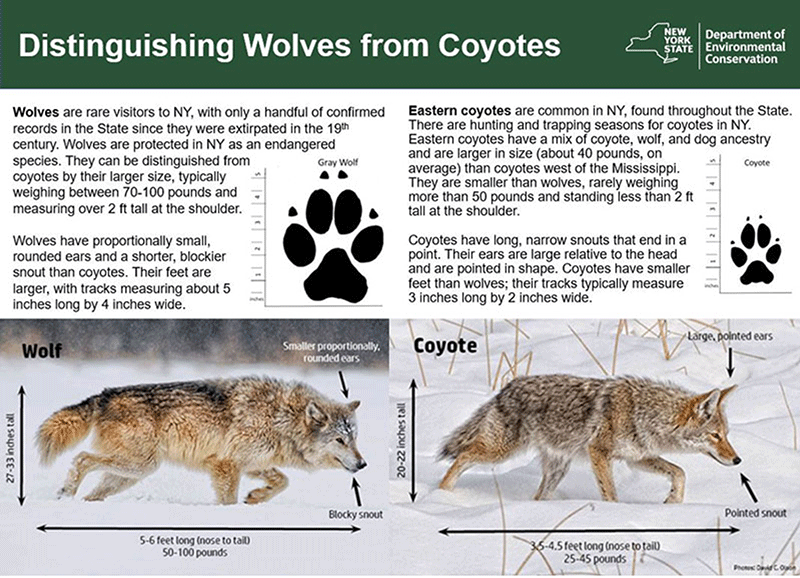
DEC’s website page illustrating differences between wolves and Eastern coyotes, but insisting that wolves “are rare visitors to NY.”
Why Are Wolves in New York?
Historically, breeding populations of wolves inhabited the northeastern United States, including New York state, but were extirpated from these areas and from many other parts of the continental United States by the late 1800’s. In recent years, however, wolves have returned to at least eleven states, including Arizona, California, Idaho, Michigan, Minnesota, Montana, New Mexico, North Carolina, Oregon, Washington and Wyoming, and have re-established breeding populations. Populations of wolves exist in the Great Lakes states and in Algonquin Provincial Park and southern Quebec in Canada. According to the U.S. Fish and Wildlife Service, wolves can disperse more than 1,000 miles from their natal territory, and studies have concluded that suitable wolf habitats in the northeastern United States are well within the dispersal capability of established wolf populations.
The preservation and protection of wolves dispersing into New York State is crucial if natural recovery of wolf populations in the Northeast is to be successful. DEC has acknowledged that New York contains “significant suitable habitat” for wolves, including 6,000 square miles of suitable habitat in Adirondack Park alone. In fact, DEC notes thatwolves have successfully recolonized regions of northern Wisconsin and the Michigan Upper Peninsula possessing habitat, road and human densities comparable to that of the Adirondack Park. This similarity is particularly significantbecause the US border is only 130 kilometers (80 miles) from the wolf core population in the Papineau Labelle Wildlife Reserve in Quebec. However, as DEC notes, wolves dispersing from this core area (or from other core areas) may be able to successfully reach the Adirondack Park only if they are protected from being killed.
Why Are Wolves Important?
Wolves play a key role in maintaining the health of ecosystems. Because they often prey on the weakest and least fit animals, wolves contribute to the overall health of prey populations such as deer, moose and beaver. In addition, the carcasses of their prey redistribute crucial nutrients and provide food for other wildlife species. Wolves are an important component in establishing and maintaining a biologically diverse ecosystem. In addition, studies conducted in Alaska and Canada have shown that wolves do not significantly diminish populations of animals important to hunters such as deer and moose. And studies have also shown that the presence of wolves helps to control coyote populations.
Wolves are also important to the indigenous people of the state. The wolf clan is one of nine clans into which the six nations of the Haudenosaunee confederacy have been organized from time immemorial.
What Can You Do to Help Protect Wolves?
Wildlife killing contests are still legal in New York. According to the Humane Society of New York, there are currently at least 29 annual wildlife killing contests in New York State, including 17 coyote killing contests. These contests often award cash prizes for the largest animals killed or for killing the largest number of target animals in the shortest time. Coyote killing contests are particularly threatening to wolves in New York because of the similarities between large Eastern coyotes and wolves.
In June 2023, the New York State Legislature passed a bill banning wildlife killing contests in the State, joining eight other states that have already outlawed the practice. The bill (S.4099/A.2917) makes it unlawful for any person to organize, sponsor, conduct, promote or participate in any contest, competition, tournament, or derby with the objective of taking or hunting wildlife for prizes or other inducement, or for entertainment. Contests for taking or hunting white-tailed deer, turkey and bear, which are already regulated by season and bag limits, are exempted, as are special dog training areas or field trials or similar canine performance events.
PROTECT is currently working with NEWRA to introduce a new bill that would provide additional critical protections to wolves in the State by requiring the following:
- All coyotes taken in the State must be checked and tagged, and coyotes that have a weight greater than fifty pounds, or that meet additional criteria established by DEC, shall be subjected to a DNA analysis. The results of any analysis performed shall promptly be provided to the public by posting on DEC’s website.
- In the event that DEC determines, based on DNA analysis or other scientific method, and after a public comment period of not less than thirty days, that a “coyote” taken in the State is a wolf, DEC shall (a) determine the location where the wolf was taken and determine, based on field research, whether there may be additional wolves in the vicinity; (b) impose a moratorium on the taking of wild canids, in a specific area of the state, for as long as the DEC determines is necessary to protect any wolves in the area; and (c) inform the public of the moratorium through posting of written notices in the moratorium area and on the department’s website.
- No later than January 1, 2026, DEC shall submit to the Legislature a report on the status of wolves in the state, based on field surveys, scat collection and analysis, howling surveys, DNA analysis, trail cameras and other methods as determined by the department. The status report shall be simultaneously posted on DEC’s website.
- DEC shall modify its hunting and trapping training curriculum to include educational information concerning the presence of wolves in the state, the legal protections for wolves, the checking and tagging requirements for wild canids, and how to distinguish a wolf from a coyote when a hunter or trapper is in the field.
When the new bill is introduced, PROTECT and NEWRA will need your support to ensure its passage by the Legislature.

